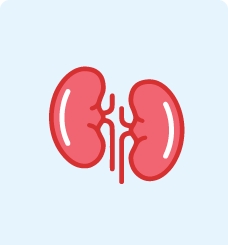-
Taylor, S et al (2017) ISFM Consensus Guidelines on the Diagnosis and
Management of Hypertension in Cats. Journal of Feline Medicine and Surgery 19: 288–303 -
Syme HM, Barber PJ, Markwell PJ, et al. (2002) Prevalence of systolic
hypertension in cats with chronic renal failure at initial evaluation. Journal of the
American Veterinary Medical Association 220: 1799–1804 -
Caney, S (2019) Feline hypertension: tests and client compliance. Vet Times
19.05 -
Acierno MJ et al (2018) ACVIM consensus statement: Guidelines for the
identification, evaluation, and management of systemic hypertension in dogs and
cats. Journal of Veterinary Internal Medicine 32(6): 1803–1822
Feline Hypertension: A Veterinary Perspective
High blood pressure in cats, medically referred to as feline hypertension, is a critical condition which demands comprehensive understanding of its aetiology, clinical manifestation, diagnosis, and management strategies. The health of feline patients hinges on our ability to effectively treat and monitor this condition across the wider veterinary community.
In this article, we offer valuable insights into feline hypertension, exploring its causes, signs, potential complications and treatment options, including the use of amlodipine in cats, designed specifically to combat feline hypertension.
At Dechra, our commitment is to advance veterinary medicine and improve pet health. This article is intended to equip veterinary professionals with the latest information and resources about feline hypertension.
How common is feline hypertension?
High blood pressure (feline hypertension) is common in the senior cat population and is usually diagnosed alongside other diseases such as hyperthyroidism and chronic kidney disease (CKD)1. Focussing on CKD, approximately 20% of cases are hypertensive at the time of diagnosis2 highlighting the importance of regular blood pressure monitoring within the older cat population.
Impact of feline hypertension
The organs which are at biggest risk from increased blood pressure are those which have a rich arterial blood supply – the brain, eyes, heart and kidneys.
Often it is only when damage to these target organs occurs that cats are presented to veterinary surgeons, yet diagnosis of hypertension before the onset of target organ damage (TOD) is essential in order to maintain quality of life3.
Clinical signs which may occur as a result of TOD range from changes in behaviour and reduced urine specific gravity, through to ataxia, seizures and blindness.

Hypertensive retinopathy / Chroidopathy

Hypertensive encephalopathy

Left ventricular Hypertrophy

Progression of CKD
The Dechra academy provides a range of on-line learning including a 2 part course presented by Sam Taylor, focusing on managing feline chronic kidney disease (CKD) alongside hypertension

Diagnosing hypertension in cats
Both blood pressure measurement and eye examinations are useful in the diagnosis of systemic hypertension.
Guidelines recommend that all adult cats should have a routine blood pressure measurement at a minimum of 12 monthly intervals. For geriatric cats and those with known risk factors (such as underlying disease or evidence of TOD) assessment is recommended even more frequently1.
Blood pressure measurement in cats can be achieved using either a Doppler or an oscillometric device – based upon veterinary preference and availability of equipment. However regardless of
methodology, it is essential to:
- Have a calm quiet environment
- Allow time for the cat to acclimatise to the environment.
- Be consistent in measurement technique.
- Take an average of multiple readings in order to truly evaluate and compare blood pressure readings.
Treatment Options for Hypertensive Cats
Treatment for hypertensive cats should always involve diagnosis and treatment of the underlying cause. However, this does not remove the need for antihypertensive therapy2.
According to most recent consensus guidelines1,4 amlodipine is the first line choice for treatment of hypertension in cats.
Veterinary professionals can log in to learn more about Dechra’s solution for feline hypertension.
Don't have an account?
Authors
By Emily Armstrong BVSc MRCVS
Veterinary Technical Manager
Dechra Veterinary Products

By Linda Holm Segerqvist DVM
European Business Manager – Dermatology
Dechra Veterinary Products

References add
